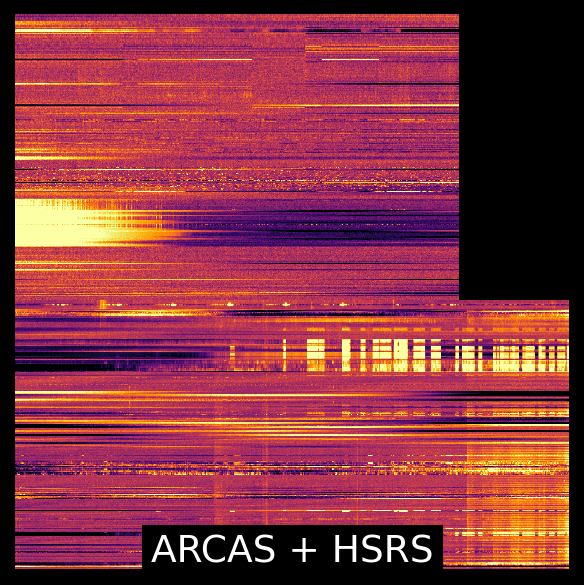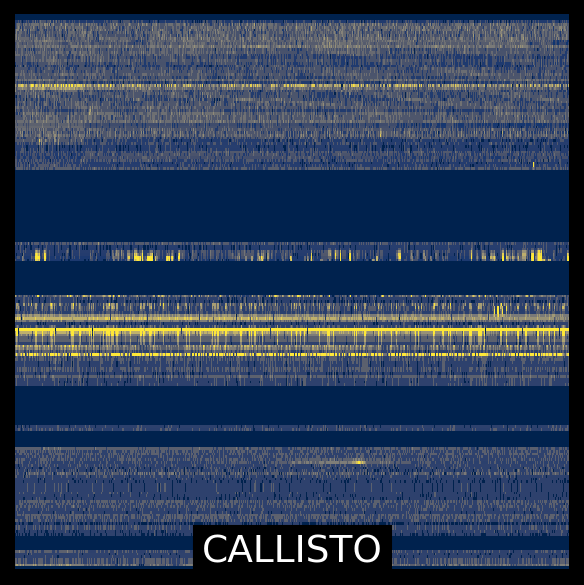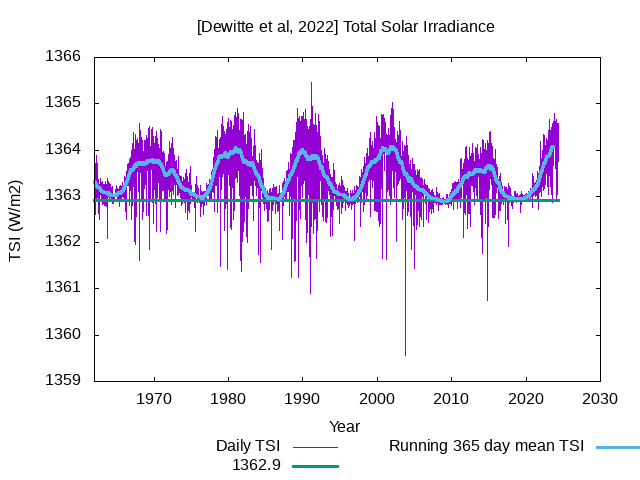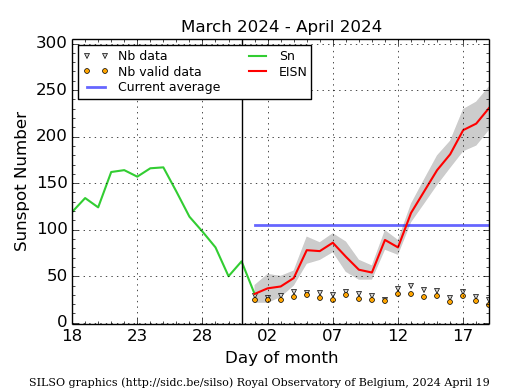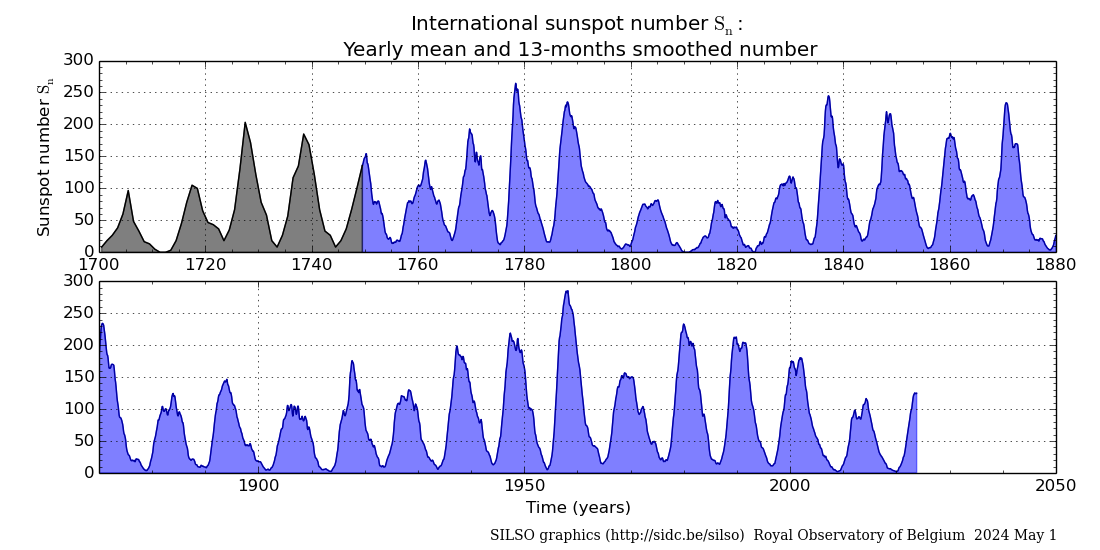The solar flaring activity was at moderate levels with few M-class flares during the last 24 hours. The strongest reported flare was GOES M8.9 flare which peaked at 15:25 UTC on May 11, produced by NOAA Active Region (AR) 3664. During the flare, source region (AR 3664) of the flare had beta-gamma-delta configuration of its photospheric magnetic field. The solar flaring activity is expected to be at moderate to high levels over the next 24 hours possibly with few M-class flares and a chance for X-class flare.
A coronal mass ejection (CME) was observed on SOHO/LASCO-C2 images around 16:24 UTC on May 11. This CME is associated with a M8.9 flare, which peaked at 15:25 UTC, produced by NOAA AR 3664. This CME has a projected speed of about 1000 km/s. A glancing blow, associated with this CME, can be expected at the Earth on May 13. A narrow CME of about 50 degree width, possibly associated with a prominence eruption, was observed on SW limb in LASCO-C2 images around 19:12 UTC on May. It is predominantly south directed so it will not arrive at Earth. Another possibly partial halo CME was observed in LASCO-C2 images around 02:00 UTC on May 12. This is possibly associated with a filament eruption on the SE quadrant of the Sun. It has a width of about 90 degree and speed of about 600 km/s. A glancing blow, associated with this CME, can be expected at the Earth late on May 14 or early on May 15.
The greater than 10 MeV proton flux dropped just below the 10 pfu threshold level 11:40 UTC on May 12. The greater than 50 MeV GOES proton flux dropped below the 10 pfu threshold level at 17:00 UTC on May 11 and it is decreasing. There is a possibility that the proton flux greater than 10 MeV may start to increase again in the next 24 hours.
The greater than 2 MeV electron flux, as measured by the GOES-16 satellite, was below the threshold level over the past 24 hours and is expected to remain so in the coming 24 hours. The 24h electron fluence is presently at normal level and it is expected to remain so in the next 24 hours.

